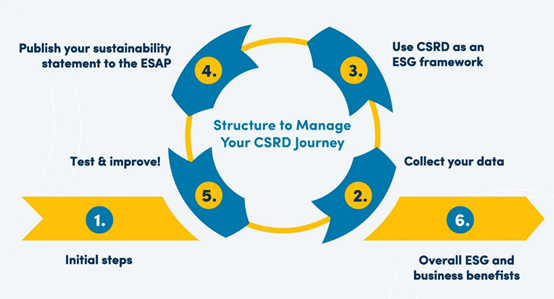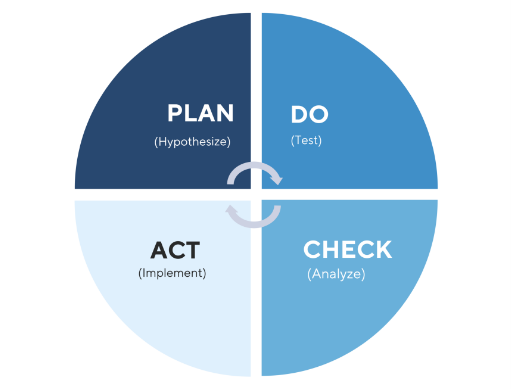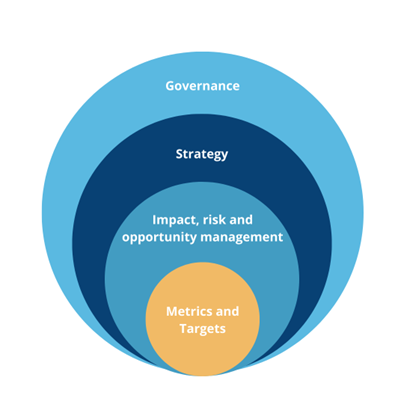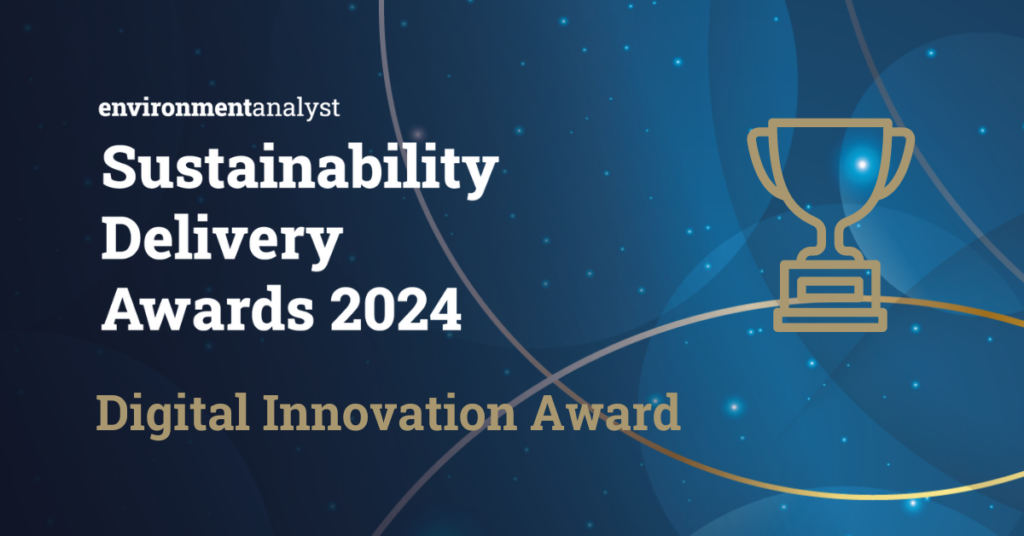- 1. Introduction
- 2. The Six Steps of Implementing CSRD
- 3. Preparation – The Reporting Areas of ESRS
- 4. Use CSRD as an ESG framework
- 5. ESAP – The Official Reporting Platform
- 6. Understand the Benefits
- 7. Overcoming Challenges and Embracing Sustainability
- 8. Conclusion
1. Introduction
Welcome to this comprehensive guide on the EU Corporate Sustainability Reporting Directive (CSRD). This blog is designed to provide you with a step-by-step guide to implementing CSRD in your organization. We will walk you through the six key steps of implementing CSRD, discuss the importance of integrating sustainability into your business strategy, and provide tips for promoting sustainability in your organization.
2. The Six Steps of Implementing CSRD

Step 1: Initial Steps
The journey to CSRD compliance begins with initial steps such as conducting a double materiality and stakeholder assessment. These assessments help identify gaps in your current practices and set the stage for the rest of the process. The double materiality assessment involves evaluating your organization’s current state of sustainability reporting and identifying areas for improvement. The stakeholder assessment, on the other hand, involves identifying and understanding the needs and expectations of your stakeholders. This could include employees, customers, investors, and the wider community.
Step 2: Data Collection
Data collection is a crucial part of CSRD implementation. Unlike traditional data collection processes, CSRD requires a more robust approach. Companies are expected to collect not just quantitative data, but a significant amount of qualitative data. This includes information about your organization’s environmental impact, social responsibility initiatives, and governance structures. It’s important to ensure that your data collection methods are reliable and the data you collect is accurate and relevant.
Step 3: CSRD as an ESG Framework
The third step involves understanding and implementing the CSRD as an ESG framework. This framework forms the backbone of the CSRD. ESG (Environmental, Social, and Governance) is a key concept in sustainability reporting. It provides a structured approach to measuring and reporting your organization’s sustainability performance.
Step 4: Reporting Results
Once you have collected the necessary data and understood the ESG framework, the next step is to report your results. This involves using the ESAP (European Single Access Point) to present your performance clearly and concisely. The ESAP is a digital platform where companies are required to upload their annual sustainability reports. It’s important to ensure that your report is comprehensive, transparent, and easy to understand.
Step 5: Test and Improve
The fifth step is a continuous process of testing and improving your system and outcomes. This step follows the Plan-Do-Check-Act (PDCA) cycle, a concept familiar to those who have worked with other standards. The idea is to check your performance regularly and make necessary improvements. This could involve refining your data collection methods, improving your double materiality assessment, updating your ESG framework, or revising your reporting practices.

Step 6: Business Benefits
The final step is about understanding and leveraging the business benefits of CSRD. Contrary to popular belief, CSRD is not just a painful exercise but also offers numerous benefits for companies. These can include improved reputation, increased customer loyalty, better risk management, and even financial benefits. By effectively implementing CSRD, your organization can position itself as a leader in sustainability and gain a competitive edge.
3. Preparation – The Reporting Areas of ESRS
In this chapter, we will delve deeper into each CSRD reporting layer required by the ESRS (European Sustainability Reporting Standards). These layers include governance, strategy, impact, risk, and opportunity management (i.e., policies and actions), targets, and metrics.

Governance
The first layer of CSRD implementation is governance. This involves setting up the right structures and processes to manage sustainability within your organization. It includes defining roles and responsibilities, establishing decision-making processes, and setting up monitoring and reporting mechanisms.
If climate change is a material issue for your company, you must report the performance of your staff and how their performance is measured against your reduction targets. This is a data point that you must report under governance.
Strategy
The next layer is strategy. This involves integrating sustainability into your business strategy. You need to describe how you have incorporated the interests of your own workforce into your strategy and business model. You also need to explain how you have addressed human rights issues.
If climate change is a material issue for your company, you must describe your climate change mitigation plan and explain what kind of mitigation efforts you have incorporated into your strategy and business model.
Policies
Policies (and actions) are the key areas within the impact, risk, and opportunity management layer. Policies are mentioned in the climate change standard and the pollution standard.
For example, if pollution is a material issue for your company, you must create policies and guidance on how you will mitigate its negative impact, how you will minimize the pollution, how you can phase out substances of very high concern, and how you will avoid incidents. These issues must be described as policies and guidance with lots of details as described in ESRS 2.
Actions
If pollution is a material issue for your company, you must consider the mitigation plan: how you can avoid pollution, how you will reduce it, and restore the ecosystem if you have already caused serious pollution. If there are communities around your site, you must consider actions on how you can prevent or mitigate negative impacts on the communities and how you can achieve positive impact for them. You must create an action plan for all these topics.
Targets
The next layer is targets. For instance, if climate change is a material issue for your company, you should describe your targets. Are they science-based? How do you meet the requirements of the Paris Agreement? Do you have any targets to reduce your negative impact or create a positive impact?
Metrics
The final layer is metrics. If pollution, particularly microplastic, is an issue for your company, you must report on this. You also need to report numbers based on net revenue for energy and water consumption. These are new requirements that may not have been important for your voluntary reporting.
4. Use CSRD as an ESG framework
CSRD enables you to report transparently on ESG issues to your stakeholders. It also helps your organization to incorporate sustainability into its strategy and business model.
Stakeholders
The standard describes two groups of stakeholders: affected stakeholders and other stakeholders who will use your sustainability statement.
Affected stakeholders include employees, workers, suppliers, consumers, customers and users, local communities, public authorities, and nature (considered a silent stakeholder).
From the stakeholder list, banks and investors are highlighted as the most important stakeholders from a financial perspective.

Sustainable Business Models
Sustainable business models integrate environmental, social, and governance (ESG) considerations into their operations. They aim to create value for all stakeholders, including shareholders, employees, customers, and the wider community, while minimizing negative impacts on the environment. Here are a few examples:
- Sharing Economy: Companies like Uber and Airbnb fall under this model. They maximize the use of assets by allowing individuals to share resources, such as cars or homes, thereby reducing waste and promoting efficient use of resources.
- Product as a Service: In this model, companies lease their products instead of selling them. For example, Mud Jeans, a company from the Netherlands, leases jeans to customers for a year. After a year, customers can decide whether to change them or buy them.
- Extension of Product Use: Companies design their products to be repairable, upgradable, and reusable. Fairphone, for instance, is made from different pieces that can be replaced like the Lego, extending the product’s lifespan, and reducing waste.

5. ESAP – The Official Reporting Platform
The European Single Access Point (ESAP) is the official platform where companies will upload their annual sustainability reports. It is a digital platform that provides a single point of access for companies to report their sustainability performance.
The ESAP is designed to be user-friendly and offers various functionalities, such as a search function and machine translation. The data on the ESAP platform can be used by all stakeholders, including investors, financial analysts, asset managers, advisors, and civil society regulators. It will be public and transparent for everybody. The best quality information about the companies will be available here.
The Role of Assurance
Assurance plays a crucial role in the CSRD implementation process. It involves an independent evaluation of a company’s sustainability report to ensure its accuracy and completeness. There are two types of assurance: limited and reasonable.
- Limited Assurance involves fewer tests and checklists and reviews data on an aggregated level. The conclusion is a negative form of expression, meaning the auditor states that nothing has come to their attention which causes them to believe the sustainability information is materially misstated.
- Reasonable Assurance involves more extensive procedures, more evidence collection, and a positive form of expression. It is similar to how auditors audit financial reports. The auditor provides an opinion on whether the sustainability information is presented fairly in all material respects.
The European Commission aims to move from limited to reasonable assurance, making ESG information as transparent as financial information.
6. Understand the Benefits
CSRD is not just a barrier but also an enabler. If you are a company with good performance, you can attract investment. CSRD will make it easier to get loans and other support. It can reduce your reporting costs in the long term because you don’t have to provide data for many stakeholders, you only provide data to one platform, and everyone can get the information from there.
If you have a leading position in your industry, you can highlight it better. You don’t have to be silent about your ESG improvements and initiatives. You can proudly describe them because there will be proven data and reports behind them. CSRD will also help prevent greenwashing.

Understanding the Impact of Your Supply Chain
Understanding the impact of your supply chain is crucial in the CSRD implementation process. With the CSRD, everyone should understand that companies in the supply chain must also report and the whole methodology will be the same for them. So, hopefully, it will help make the supply chain more transparent and reduce the number of issues.
7. Overcoming Challenges and Embracing Sustainability
In this chapter, we will discuss how to overcome emotional barriers in the organization when it comes to sustainability. We will provide tips for promoting sustainability in the organization and discuss the role of sustainability managers.
Overcoming Emotional Barriers
Emotional barriers often hinder the progress of sustainability initiatives within an organization. These barriers can stem from a variety of sources, such as a lack of understanding about sustainability, resistance to change, or feelings of helplessness in the face of global challenges.
To overcome these barriers, it’s important to foster a positive and supportive environment where individuals feel empowered to make a difference. This can be achieved by providing clear and consistent communication about the importance of sustainability and the role each individual can play in contributing to sustainability goals.
Promoting Sustainability in the Organization
Promoting sustainability in an organization involves more than just implementing sustainable practices. It also involves creating a culture where every member of the organization understands the importance of sustainability and is committed to achieving sustainability goals.
Here are some tips for promoting sustainability in your organization:
- Lead by Example: Leaders play a crucial role in setting the tone for the organization. By demonstrating a commitment to sustainability, leaders can inspire others to follow suit.
- Educate and Engage: Provide regular training and education about sustainability. Encourage employees to participate in sustainability initiatives and provide opportunities for them to contribute their ideas.
- Recognize and Reward: Recognize and reward employees for their contributions to sustainability. This can help motivate employees and reinforce the importance of sustainability.
The Role of Sustainability/ESG Managers
Sustainability managers play a crucial role in driving sustainability initiatives within an organization. They are responsible for developing and implementing sustainability strategies, coordinating sustainability efforts across different departments, and monitoring and reporting on sustainability performance.
Sustainability managers also play a key role in engaging and educating employees about sustainability. They can help foster a culture of sustainability by providing training, facilitating discussions, and promoting sustainability initiatives.
8. Conclusion
The journey towards sustainability is a positive one. All the knowledge and understanding built up over the years have been incorporated into the CSRD framework. In your role, you can do a lot and use this framework to move your company on this journey. Remember, sustainability is not just a barrier, but an enabler. Embrace it, and let it guide your company towards a sustainable future. The path may be challenging, but with the right approach and mindset, you can turn these challenges into opportunities for growth and innovation. Stay the course, and let’s build a sustainable future together.
If you want to learn more about CSRD or want a free consultation with a CSRD expert, visit this page.






